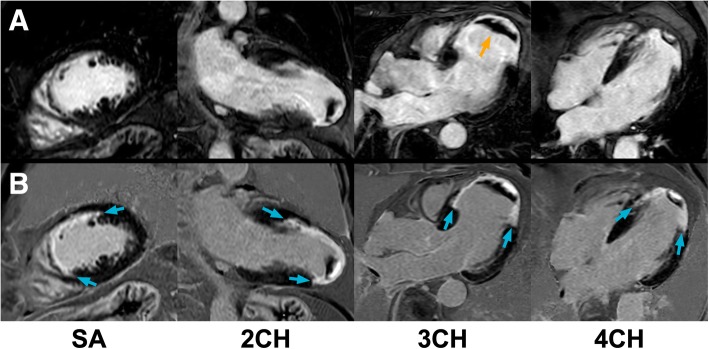Fig. 2.
Bright-blood and dark-blood LGE images of a subject with myocardial infarction and a large apical thrombus. Panel a: Conventional bright-blood phase sensitive inversion recovery (PSIR) LGE images of the short-axis at mid-ventricular level (SA), two-chamber view (2CH), three-chamber view (3CH), and four-chamber view (4CH), which show a myocardial infarction in the left anterior descending (LAD)-territory with transmurality ranging from 75 to 100% and a large area of left ventricular (LV) thrombus in the apex (orange arrow). Panel b: Dark-blood PSIR LGE images of the same views. Although the myocardial infarction was clearly seen by both LGE methods, the transmural extent was challenging to assess on the bright-blood LGE images due to poor definition of the border between scar and LV blood. In contrast, both the short-axis view and long-axis views obtained by dark-blood LGE allowed clear delineation of the (transmural extent of the) infarcted area (blue arrows). Additionally, the area of LV thrombus is still clearly visible due to the dark-blood effect (blood appears dark gray) rather than a black-blood effect. In this case, conventional LGE and dark-blood LGE were performed at 10 min and 20 min post-injection, respectively. For specific scan details, see ‘Philips Ingenia’ at Table 1

